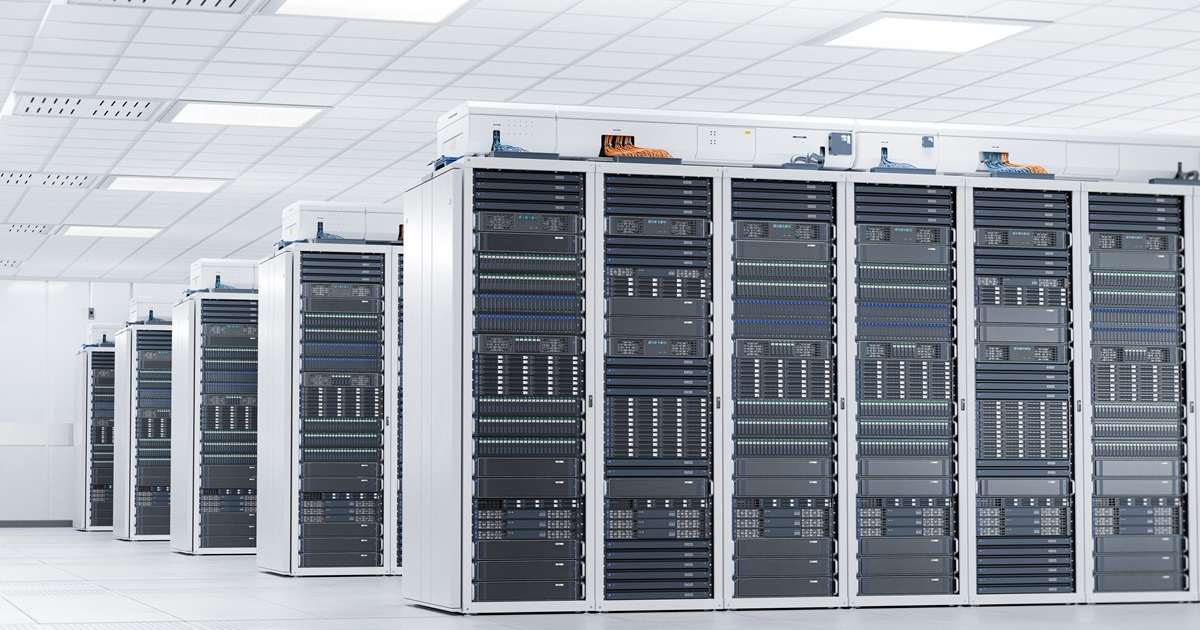
Virtualized Environments
Business Wire | January 09, 2024
VeriSilicon today unveiled its latest VC9800 series Video Processor Unit (VPU) IP with enhanced video processing performance to strengthen its presence in the data center applications. The newly launched series IP caters to the advanced requirements of next generation data centers including video transcoding servers, AI servers, virtual cloud desktops, and cloud gaming.
The VC9800 series of VPU IP boasts high performance, high throughput, and server-level multi-stream encoding and decoding capabilities. It can handle up to 256 streams and support all mainstream video formats, including the new advanced format VVC. Through Rapid Look Ahead encoding, the VC9800 series IP improves video quality significantly with low memory footprint and encoding latency. With capable of supporting 8K encoding and decoding, it offers enhanced video post-processing and multi-channel encoding at various resolutions, thus achieves an efficient transcoding solution.
The VC9800 series of VPU IP can seamlessly interface with Neural Network Processor (NPU) IP, enabling a complete AI-video pipeline. When combined with VeriSilicon’s Graphics Processor Unit (GPU) IP, the subsystem solution is able to deliver enhanced gaming experiences. In addition, the hardware virtualization, super resolution image enhancement, and AI-enabled encoding functions of this series IP also offer effective solutions for virtual cloud desktops.
“VeriSilicon’s advanced video transcoding technology continues leading in Data Center domain. We are working closely with global leading customers to develop comprehensive video processing subsystem solutions to meet the requirements of the latest Data Centers,” said Wei-Jin Dai, Executive VP and GM of IP Division of VeriSilicon. “For AI computing, our video post-processing capabilities have been extended to smoothly interact with NPUs, ensuring OpenCV-level accuracy. We’ve also introduced super resolution technology to the video processing subsystem, elevating image quality and ultimately enhancing user experiences for cloud computing and smart display.”
About VeriSilicon
VeriSilicon is committed to providing customers with platform-based, all-around, one-stop custom silicon services and semiconductor IP licensing services leveraging its in-house semiconductor IP.
Read More

Virtual Desktop Tools, Virtual Desktop Strategies, Server Virtualization
PR Newswire | September 01, 2023
Netskope, a leader in Secure Access Service Edge (SASE), today announced the launch of Proactive Digital Experience Management (DEM) for SASE, elevating best practice from the current reactive monitoring tools to proactive user experience management. Proactive DEM provides experience management capabilities across the entire SASE architecture, including Netskope Intelligent SSE, Netskope Borderless SD-WAN and Netskope NewEdge global infrastructure.
Digital Experience Management technology has become increasingly crucial amid digital business transformation, with organizations seeking to enhance customer experiences and improve employee engagement. With hybrid work and cloud infrastructure now the norm globally, organizations have struggled to ensure consistent and optimized experiences alongside stringent security requirements.
Gartner predicts that "by 2026, at least 60% of I&O leaders will use DEM to measure application, services and endpoint performance from the user's viewpoint, up from less than 20% in 2021." However, monitoring applications, services, and networks is only part of a modern DEM experience, and so Netskope Proactive DEM goes beyond observation, providing Machine Learning (ML)-driven functionality to anticipate, and automatically remediate, problems.
Sanjay Beri, CEO and co-founder of Netskope commented, "Ensuring a constantly optimized experience is essential for organizations looking to support the best productivity returns for hybrid workers and modern cloud infrastructure, but monitoring alone is not enough. Customers have told us of the challenges they face managing a multi-vendor cloud ecosystem and so we have yet again innovated beyond industry standards, providing experience management that can both monitor and proactively remediate."
For issue identification, Netskope Proactive DEM uniquely combines Synthetic Monitoring with Real User monitoring, creating SMART monitoring (Synthetic Monitoring Augmentation for Real Traffic). This enables full end-to-end 'hop-by-hop' visibility of data, and the proactive identification of experience-impacting events. SMART monitoring enables organizations to anticipate potential events that might impact upon network and application experience.
While most SASE vendors rely on "gray cloud" infrastructure - built on public cloud - which limits their ability to granularly identify and control any issues, Proactive DEM leverages Netskope NewEdge - the industry's largest private cloud infrastructure - to deliver 360 visibility and control of end-to-end user experience while providing mitigation of issues, including using various self-healing mechanisms, before the user recognizes their experience has degraded.
About Netskope
Netskope, a global SASE leader, helps organizations apply zero trust principles and AI/ML innovations to protect data and defend against cyber threats. Fast and easy to use, the Netskope platform provides optimized access and real-time security for people, devices, and data anywhere they go. Netskope helps customers reduce risk, accelerate performance, and get unrivaled visibility into any cloud, web, and private application activity. Thousands of customers trust Netskope and its powerful NewEdge network to address evolving threats, new risks, technology shifts, organizational and network changes, and new regulatory requirements.
Read More

Virtual Desktop Tools, Server Hypervisors
Business Wire | August 31, 2023
Meter, Inc., a leader in Network as a Service (NaaS) for businesses, today announced DNS Security, built in partnership with Cloudflare, the security, performance, and reliability company. Meter DNS Security is now widely available for all Meter Network customers, expanding Meter’s existing NaaS offering and saving teams both time and money, while also improving overall network performance and security, powered by Cloudflare’s Zero Trust platform.
“With the number of devices on a network expected to triple by 2030, modern businesses and organizations demand enterprise network controls to ensure safety and peak performance for business critical functions,” said Anil Varanasi, CEO and co-founder of Meter. “Meter DNS Security is the latest example of how we’re continuing to offer our customers enterprise level networks end-to-end. Through our partnership with Cloudflare, we’re enhancing our capabilities to meet the needs of IT professionals at industrial warehouses, educational institutions, security firms, and more.”
Meter DNS Security eliminates the hassle of having multiple vendors, by providing content filtering at several layers to all customers within the Meter Dashboard in partnership with one of the best providers in the world.
“We’re proud to have Meter leveraging Cloudflare’s Zero Trust platform in a new way, offering our DNS filtering feature natively built into their Meter Dashboard,” said John Graham-Cumming, CTO, Cloudflare. “By building on Cloudflare's platform, Meter enables customers to manage their team’s operations at scale, as well as effectively enforce global corporate policies across diverse corporate spaces, such as offices, schools, and warehouses.”
In addition to the ease and scalability of Meter DNS Security, users are ensuring security through enhanced compliance by blocking access to known malicious websites and bad actors. The integration and partnership with Cloudflare provides customers with faster DNS response times, while optimizing network performance by limiting access to high-bandwidth websites and services. Real world examples of this process include, but are not limited to:
Ensuring a safe browsing environment at schools by filtering out age inappropriate content
Optimizing network performance for warehouses by filtering high bandwidth activities like video streaming
Maintaining high security and compliance standards by filtering malicious or illegal content
“Tishman Speyer has successfully partnered with Meter to streamline the networking and Wi-Fi experience for our customers,” said Simon Okunev, Managing Director and Chief Information Officer, Tishman Speyer. “The addition of Meter’s DNS Security feature, powered by Cloudflare, will further benefit our customers by providing an additional layer of security.”
About Cloudflare
Cloudflare, Inc. is on a mission to help build a better Internet. Cloudflare’s suite of products protect and accelerate any Internet application online without adding hardware, installing software, or changing a line of code. Internet properties powered by Cloudflare have all web traffic routed through its intelligent global network, which gets smarter with every request. As a result, they see significant improvement in performance and a decrease in spam and other attacks. Cloudflare was awarded by Reuters Events for Global Responsible Business in 2020, named to Fast Company's Most Innovative Companies in 2021, and ranked among Newsweek's Top 100 Most Loved Workplaces in 2022.
Read More